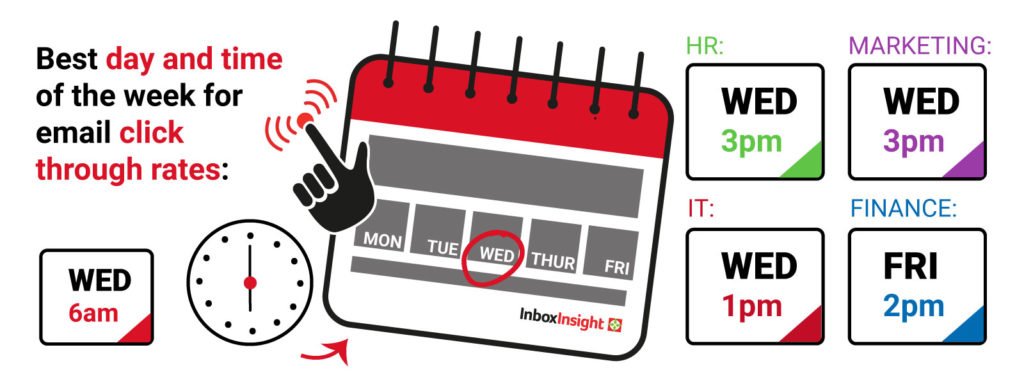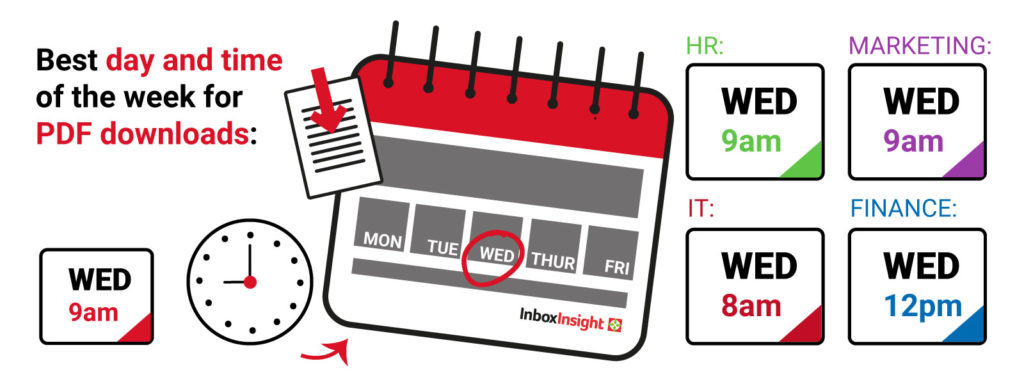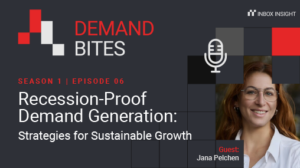If you’re responsible for the email marketing in your organization, you’ll already know that optimizing your activity is one of the most important aspects of successful email marketing strategy. Your email send time is now crucial to ensure your messages aren’t ignored or missed by your audience. If you send at the wrong time, you risk low open rates, poor conversion rates and an overall terrible email engagement rate.
Reading time: 9 minutes
Why is email still an important channel?
Email marketing is still one of the most effective channels for connecting with customers. Despite the emergence of other communication tools, email remains a popular choice due to its time-tested advantages.
Not only does email offer the highest reach and penetration rate among all marketing channels, it’s estimated that over 4.3 billion people already have an email address and this number is only going to increase. Email marketing is also one of the most cost-effective channels, allowing businesses to reach large numbers of customers with minimal investment, and it’s easy to measure the performance of campaigns using metrics such as open, click-through and conversion rates.
Additionally, businesses can segment their audience and deliver personalized messages to help increase its relevancy and drive better engagement.
How do you measure email performance?
Measuring email performance is a critical component of an effective email marketing strategy, and there are a number of different metrics that you can be tracking. By tracking these metrics over time, email marketers can gain valuable insights into their target audience’s behavior and adjust their strategy accordingly. Additionally, by tracking how audiences interact with different versions of emails, marketers can assess which versions yield the best results in order to improve the overall performance of their campaigns.
For each of the metrics below, we’re going to use this campaign example:

You send 1000 emails.
100 unique users open the email.
20 people click on a link in the email.
2 people unsubscribe from future emails.
Here are five email marketing metrics you should consider tracking:
Open rate
The open rate is an important indicator of the success of an email marketing campaign. It helps marketers measure how many people are actually engaging with their emails. A higher open rate means that more people are viewing the emails, and thus, more likely to act on the call-to-action. Your open rate can be improved by optimizing the subject line, including pre-header text, personalizing sender name and segmenting your email list.
To calculate the open rate, divide the number of emails that were opened by the number of emails you sent. The open rate for our campaign example would be 10% (100 emails were opened ÷ 1000 emails that were sent x 100). Somewhere between 15% and 25% is where you should be aiming.
Click through rate
Click through rate (CTR) measures how effective an email campaign is in terms of driving people to click through on a link. A high CTR is an indication that your emails are engaging and people are finding value in them. You can calculate CTR by dividing the total number of clicks on a link in an email by the total number of email opens. Based on the campaign example outlined above, your CTR would be 2% (20 link clicks ÷ 1000 emails sent x 100).
Generally speaking, a good CTR for email marketing is between 2-5%. Anything above 5% is considered to be excellent, and anything below 2% is considered to be poor. The average CTR for all industries in 2021 was 2.3%. It’s important to remember that CTRs can vary greatly depending on the type of email you’re sending and what industry you’re in:
| Industry | Click-Through Rates |
| Advertising & Marketing | 1.8% |
| Agriculture, Forestry, Fishing, Hunting | 3.4% |
| Consumer Packaged Goods | 1.9% |
| Education | 4.4% |
| Financial Services | 2.4% |
| Restaurant, Food & Beverage | 2.0% |
| Government & Politics | 2.8% |
| Healthcare Services | 3.0% |
| IT/Tech/Software | 2.0% |
| Logistics & Wholesale | 2.0% |
| Media, Entertainment, Publishing | 2.9% |
| Nonprofit | 2.7% |
| Other | 2.6% |
| Professional Services | 2.1% |
| Real Estate, Design, Construction | 3.6% |
| Retail | 0.7% |
| Travel, Hospitality, Leisure | 1.4% |
| Wellness & Fitness | 1.2% |
| Average | 2.3% |
Click-to-open rate
Click-to-open rate (CTOR) is the ratio of the number of unique users that open the email and the number of users that click on any link in the email. A higher CTOR means the email is engaging and relevant to its recipients. To calculate the click-to-open rate, divide the number of unique users who clicked on a link in the email by the total number of users who opened the email. The resulting number is then multiplied by 100 to get the CTOR. Based on our example campaign, the click-to-open rate would be 20% (20 people clicked on a link ÷ 100 people opened the email x 100).
The CTOR reveals how effective your email content is. Higher CTORs indicate that users are interested in your content and are likely to take some action. On the other hand, a low CTOR may indicate the content needs to be improved.
Unsubscribe rate
The unsubscribe rate is the percentage of recipients who have chosen to unsubscribe from your email list. A high unsubscribe rate indicates that something is wrong with the email campaign, whether that’s the content, frequency of emails, relevancy or something else. A good unsubscribe rate is anything less than 2%, although this will vary depending on your industry and type of email.
To calculate your unsubscribe rate, divide the number of people that unsubscribed by the number of emails you send. The unsubscribe rate for our example campaign is 0.2% (2 people unsubscribed ÷ 1000 emails sent x 100).
How can you optimize your emails?
It’s not enough to expect your marketing emails to be a success straight away. Instead, marketers should look at optimizing their email sends over time to maximize results and boost email marketing success. There are a number of ways you can do this:
Choose the right time of day
Paying attention to when in the day you’re sending your emails could impact whether or not they are opened. Whether you choose to send at the beginning of the working day, just after midday when people are returning from their lunch breaks or in the evening once they’ve finished for the day could have a big impact on how successful your campaign is. The optimal time to send your email schedule will likely depend on a variety of factors, including the content you’re sharing, so this will require a bit of trial and error to find that sweet spot.
Send on the best day of week
Different B2B businesses will find the best day of the week to send emails will vary depending on the buyer personas their targeting and the types of emails they’re sending. All in all, this can largely be a trial-and-error process. It’s worth collecting together different research to create your own email marketing benchmarks as a starting point and then testing different days and time slots.
A/B test the subject lines
The subject of your email will play a big role in your email subscribers determining whether or not they open your email. Getting the email subject line right, will pique their interest and ensure your newsletter is opened. For this reason, testing different subject lines using the A/B method will allow you to trial different formats, contents and styles to see which will resonate best with your target audience.
Experiment with audience segmentation
By segmenting your audience, marketers can send more personalized messages and content that better appeal to your customer base. This also enables you to get a better understanding of your customer’s needs and interests, and then use that knowledge to create more relevant emails that are more likely to be opened and read.
Audience segmentation starts with gathering demographic and psychographic data, such as age, gender, income level, location, interests, preferences, and more. This data can be gathered from customer surveys, social media platforms, website visits, and other sources.
Personalize the content in your emails
Rather than relying on a one-fits-all approach, personalized emails will go a long way in making them effective. This could be using names in subject lines, aligning email content to their activity on your website or providing a discount offer based on products they’ve looked at or bought in the past.
Include a call-to-action (CTA)
You can’t expect an individual to convert if you don’t provide them with some direction. This means giving a clear call-to-action in your emails that demonstrates what the next step should be. It’s worth split testing your CTA to determine which copy, color and positioning works best for your subscriber list.
Experiment with different content formats
The number of emails sent and received on a daily basis in 2023 is expected to be around 347.3 billion. With billions of emails clamoring for the attention of your subscriber list, it’s crucial you experiment with different ways to stand out from the crowd. Whether this is including memes, GIFs, video, infographics or more interactive elements such as polls, it’s worth experimenting to test deliverability and engagement rates.
When is the best time to send emails?
This is the million dollar question and different industry experts will give you different answers. Originally, it’s thought that the morning is the best time to send as subscribers will either read the email on their morning commute or perhaps earmark it as a lunch time read. However, our own data seems to contradict this with many audiences seeing a higher open rate and click through rate in the afternoon, or even in the evenings.
This is another area where trial and error will be important. Testing different send times to understand subscriber behaviors at different times of the day will help you improve your email marketing statistics but also enable you to get a better insight into your prospective buyers.
5 things to consider when choosing an email send time
Email send time will vary from business to business. There’s no hard and fast rule for this as it will largely depend on your audience behaviors and the products/services you offer. This means it can be a bit of trial and error to get right, but when it comes to selecting the best time to send, here are six things you should consider:
1. Look at your audience behavior and demographics
Understanding the unique behavior of your audience and target demographic will go a long way to determining when you should send your emails. If your audience is often on line during the mornings, then it’s no good sending in the afternoons.
2. Make sure to consider timezones
Where in the world is your audience located? Timezone can play a big part in this, especially if you’re operating a global business. Schedule your sends around this so you’re catching your audience at the ideal time. This is especially important in countries with multiple time zones such as the USA.
3. Compare research
There’s a lot of research out there about the best days and times to send emails. Compare what’s on offer and cross-reference it against your own date to work out the perfect time to end your marketing emails.
4. Avoid holidays
During the holidays could be the worst time to send. Unless you have holiday-specific promotional emails, think carefully about whether it’s worth sending during these times. Consider building yourself a calendar so you can track international and national holidays.
5. Sending too many
Are you sending too many emails? Monthly or weekly newsletters are standard practice, but if you’re wanting to send more often than this, you will need to think carefully about your strategy. If your email frequency is too high, your audience will unsubscribe.
6. Observe local customs
Make sure you understand the local customs of your B2B audience. Business emails are likely to only be received during the working week. For regions such as the Middle East, the working week is Sunday to Thursday, therefore sending email blasts on Friday or Saturday are likely to experience low engagement levels.
Best day and time to send emails – according to our data
We’ve drawn data from all of our regularly scheduled email newsletters and email marketing campaigns over the last two years to understand which day of the week is best for email open rates, email click through rates, and PDF downloads.
Our email newsletters are filled with ebooks, guides and whitepapers from some of the biggest B2B brands and are sent on a regular basis to our 4.1 million business professionals across Europe, the Middle East and Africa.
Overall, the best day to send emails is Wednesday. While this is pretty consistent across the four different audience personas we investigated, there is a noticeable difference on the best time to send.
Email open rates are highest on Tuesdays, but when broken down by our key audiences, HR, Marketing and IT professionals prefer Wednesdays. The best time also varies, with HR and IT professionals preferring 8pm, while Marketing and Finance professionals are opening emails at 2pm.

CTRs follow a similar pattern, except the best time for HR and Marketing professionals is 3pm, while the CTR for IT professionals is 1pm, and Finance professionals is 2pm.

While CTRs see more success in the afternoons, we see more PDF downloads in the mornings – 9am for HR and Marketing professionals, 8am for IT professionals and 12pm for Finance professionals.

Using this to help guide your email send times is the first step in improving your email campaign performance. Once established, it will be important to review how you see your audience reacting to the content you send and then test different send days/times to see what works best for you.
Test, test, test
Consistency is certainly key in establishing predictability and routine, but testing is crucial to keeping your strategy fresh. Haits and behaviors will naturally change over time as priorities shift, professionals mature and technology advances. This means your email sending schedule needs to adjust too.
It’s not just day and time of the week that you need to test, email subject lines, personalization, call-to-actions and content will all impact the performance of your email campaigns. The send day is just a small part of that.






